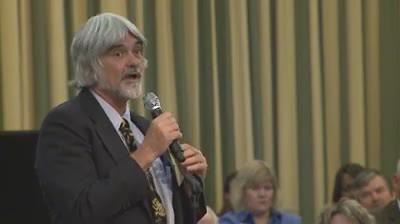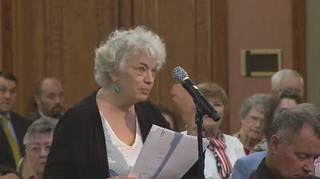Re-evaluate Plant Vogtle, especially its water use,
and move to efficiency, wind, and solar power instead,
said
 Courtney Hanson of
Georgia Women’s Action for New Directions (GA WAND)
at
the Georgia Public Service Commission meeting Tuesday 18 June 2013.
Courtney Hanson of
Georgia Women’s Action for New Directions (GA WAND)
at
the Georgia Public Service Commission meeting Tuesday 18 June 2013.
She reminded GA PSC Plant Vogtle 3 and 4 are late and over budget, and then:
I want to add my voice to the chorus of folks here who are concerned about water issues.We know that Vogtle 3 and 4 will require an additional withdrawal of as much as 74 million gallons a day from the Savannah River and most of that water will not be returned. We know that the central Savannah River area where Vogtle is located is already very prone to droughts and the plant has been close to shutting down several times due to drought conditions.
Georgia is also already struggling to supply enough water for our homes, businesses, industries, and farms.
In addition, the Savannah River is Continue reading












